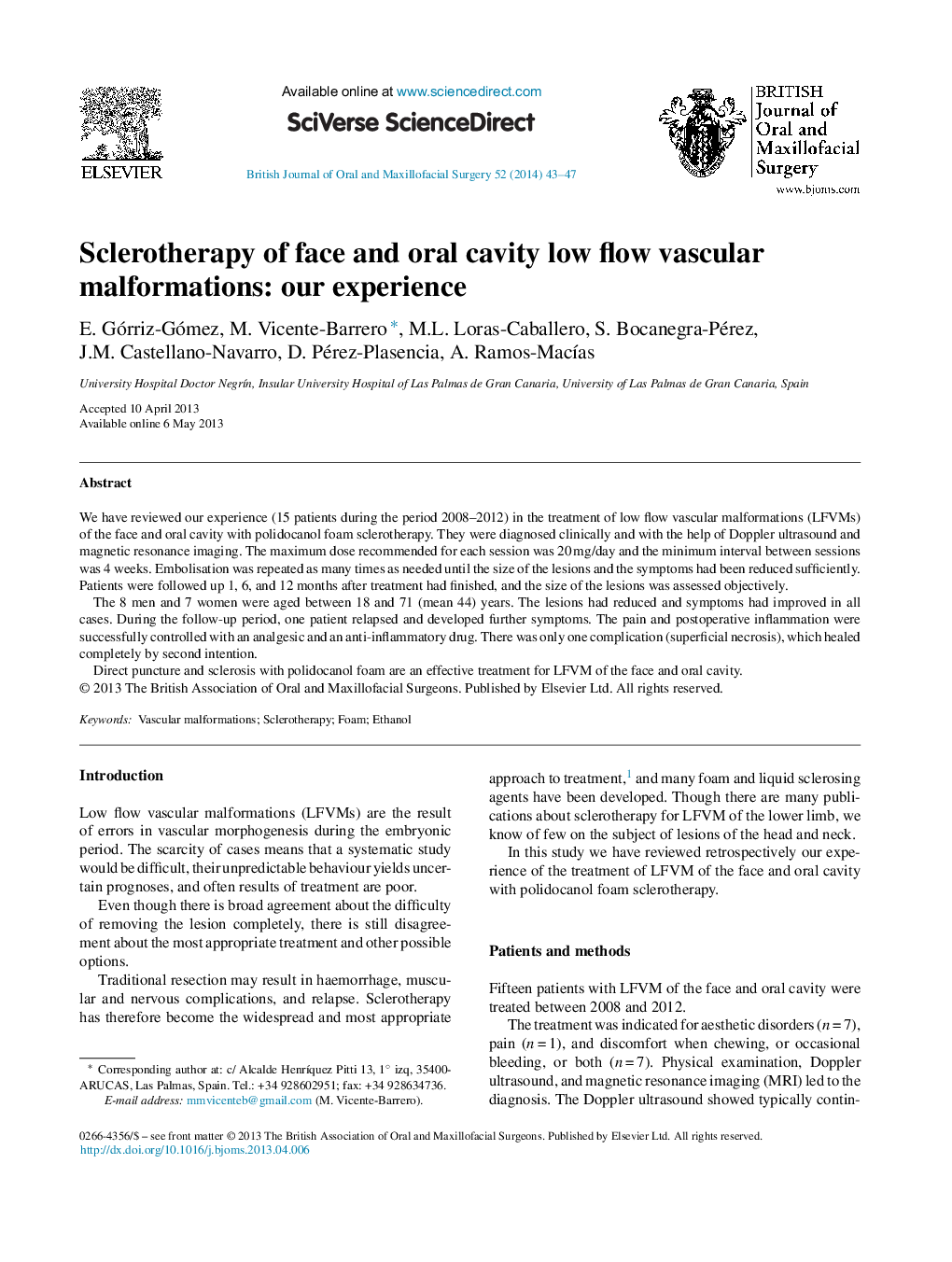| Article ID | Journal | Published Year | Pages | File Type |
|---|---|---|---|---|
| 3123166 | British Journal of Oral and Maxillofacial Surgery | 2014 | 5 Pages |
We have reviewed our experience (15 patients during the period 2008–2012) in the treatment of low flow vascular malformations (LFVMs) of the face and oral cavity with polidocanol foam sclerotherapy. They were diagnosed clinically and with the help of Doppler ultrasound and magnetic resonance imaging. The maximum dose recommended for each session was 20 mg/day and the minimum interval between sessions was 4 weeks. Embolisation was repeated as many times as needed until the size of the lesions and the symptoms had been reduced sufficiently. Patients were followed up 1, 6, and 12 months after treatment had finished, and the size of the lesions was assessed objectively.The 8 men and 7 women were aged between 18 and 71 (mean 44) years. The lesions had reduced and symptoms had improved in all cases. During the follow-up period, one patient relapsed and developed further symptoms. The pain and postoperative inflammation were successfully controlled with an analgesic and an anti-inflammatory drug. There was only one complication (superficial necrosis), which healed completely by second intention.Direct puncture and sclerosis with polidocanol foam are an effective treatment for LFVM of the face and oral cavity.
